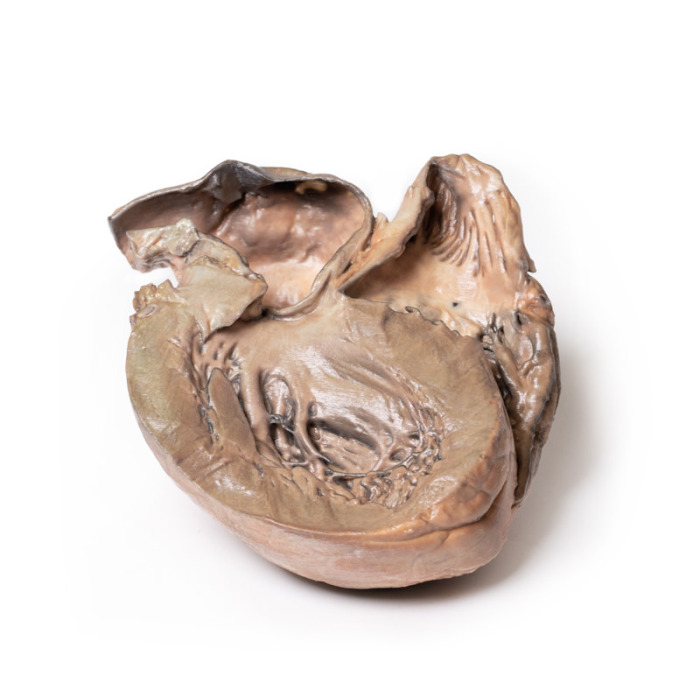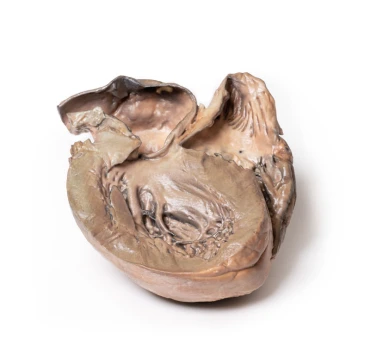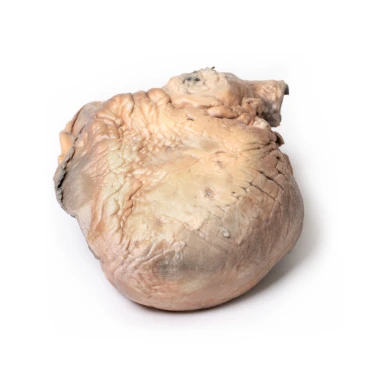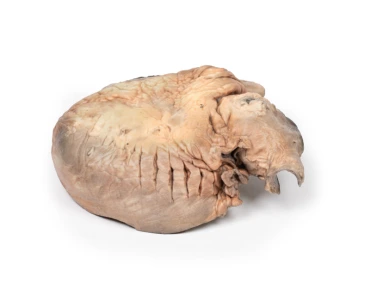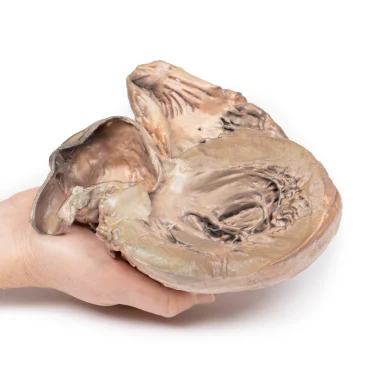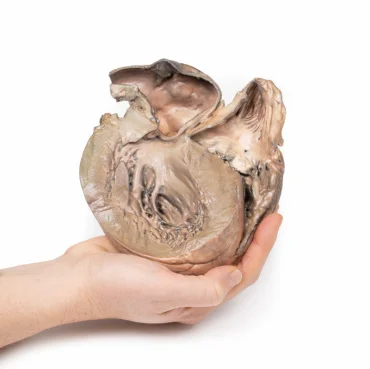MP2043 - Ruptured Thoracic Aortic Aneurysm
By buying you get
330 Points
More than a purchase. You get service and expert advice. Ask which products and combinations are recommended for you.
Clinical History
No clinical details are available for this specimen.
Pathology
The heart displays both ventricles from the posterior aspect. There is a prominent saccular dilatation of the thoracic ascending aorta, which shows several atherosclerotic plaques and posteriorly is seen to be ruptured (identified by the dark staining). Both ventricles are hypertrophied. The coronary arteries together with the aortic and tricuspid valves are normal. This is an example of a ruptured aneurysm of the ascending aorta.
Further information
The dilation of the ascending aorta is a common incidental finding on transthoracic echocardiography performed for unrelated indications. The thoracic aorta is divided into 3 parts: ascending, arch and descending. The ascending aorta originates beyond the aortic valve and ends right before the innominate artery (brachiocephalic trunk). It is approximately 5 cm long and is composed of two distinct segments. The lower segment, known as the aortic root, encompasses the coronary sinuses and sinotubular junction (STJ). The upper segment, known as the tubular ascending aorta, begins at the STJ and extends to the aortic arch (innominate artery). More than 50% of thoracic aortic aneurysms are localized to the ascending aorta, which may affect either the aortic root or tubular aortic segment. An aneurysm is defined as a localized dilation of the aorta that is more than 50% of predicted (ratio of observed to expected diameter = 1.5). Aneurysm should be distinguished from ectasia, which represents a diffuse dilation of the aorta less than 50% of normal aorta diameter. The incidence of ascending thoracic aortic aneurysms is estimated to be around 10 per 100,000 person-years[1].
Reference
1. Saliba et al. (2015). Int J Cardiol Heart Vasc. 6: 91–100.
- Quantitative unit
- ks
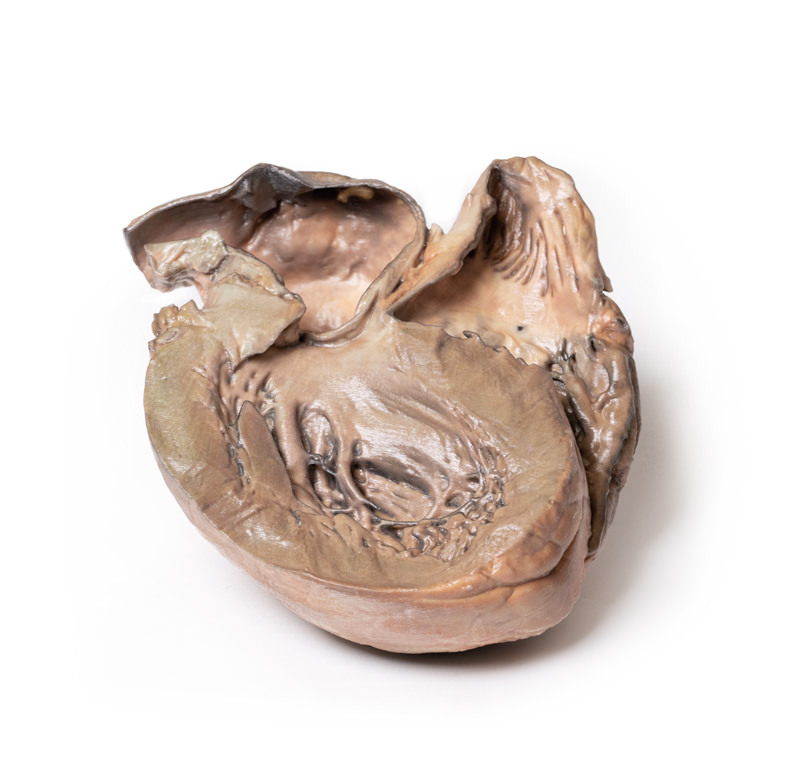
MP2043 - Ruptured Thoracic Aortic Aneurysm
